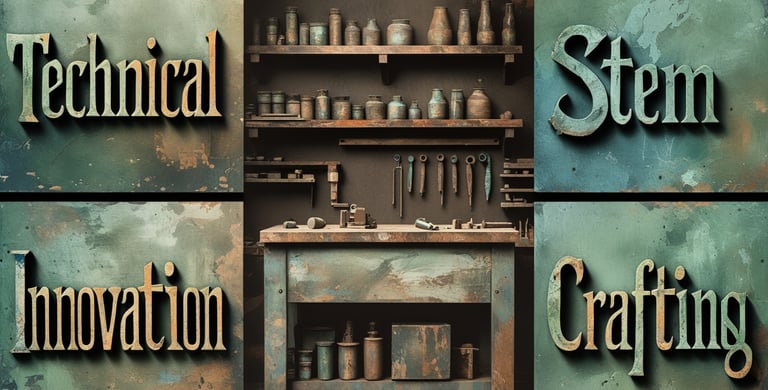Clay and Earthen Craft: Pottery, Brick, and Primitive Building for Survival
Shaping the Flesh of the Earth into Vessels of Life and Strongholds of Dominion
4FORTITUDET - TECHNICAL SKILLS, CREATIVE ARTS, STEM
Clay and Earthen Craft: Pottery, Brick, and Primitive Building for Survival
Shaping the Flesh of the Earth into Vessels of Life and Strongholds of Dominion
"Does not the potter have power over the clay?" — Romans 9:21
Steel rusts. Fabric frays. But the earth — the earth endures.
When the luxuries of industry vanish, when synthetic goods fail, it is the man who shapes earth with hand and fire who preserves food, shelters kin, and reignites civilization. Clay and earthen craft is not decorative. It is foundational. A man who shapes dust into structure is a builder of nations.
Core Knowledge Foundation
Without earthen skill:
Water is carried in hands.
Fire is wasted.
Food spoils.
Shelter falls.
With earthcraft:
Clay vessels store, carry, and preserve.
Brick and cob build ovens, shelters, and thermal walls.
Rocket stoves channel energy into heat, survival, and self-rule.
Earth is your most abundant weapon — if you learn to shape it.
Tactical Implementation Snapshot
Identify a local clay deposit using moisture, cohesion, and roll testing
Process raw clay through soaking, sieving, and drying
Build a simple bowl or water jar with the coil technique
Mix and mold bricks from clay, sand, straw — sun dry or pit-fire
Construct a working rocket stove or cob wall segment using earth and fire
Advanced Insights
The paradox of clay:
It is soft in the hand, yet endures centuries
It crumbles when neglected, yet becomes stronger than stone when refined
Clay teaches us:
To shape is to submit first — to soften, knead, adapt
Only through fire does form become function
The sovereign builder kneels in mud not as a servant of the earth — but as its sovereign shaper.
Tactical Implementation Snapshot
Pit-fire a vessel overnight using slow-ramping fire techniques
Craft bricks with varying fiber ratios and test for strength and erosion
Use a self-built earth oven to cook a meal or sterilize tools
Build a small insulated structure (e.g., root cellar wall or shelter corner) using cob methods
Critical Perspectives
Those enslaved to industry protest:
“We have better materials.”
“This is primitive.”
“Plastic is easier.”
Yet when plastic shatters and steel disappears — earth remains.
To reject clay is to reject sovereignty.
To ignore the furnace is to abandon the forge.
The potter is not backward. He is the architect of post-collapse civilization.
Tactical Implementation Snapshot
Replace one plastic household item with a hand-fired clay alternative
Host a clay harvest and firing day with your children or tribe
Create an inventory of fire-safe, water-safe, and structure-grade clay products for your homestead
Final Charge & Implementation
"The Lord God formed the man of dust from the ground." — Genesis 2:7
Two Immediate Actions:
Harvest and Prepare Natural Clay: Identify a local source, test it, soak and purify. Shape it into a small object.
Craft and Fire a Vessel: Form a cup, bowl, or jar. Pit-fire it. Test it for sealing and strength.
Existential Reflection
When machines fall and the grid flickers out, will you kneel in despair — or shape a nation from the very dust beneath your feet?
Living Archive Element
Create a "Clay and Earthcraft Codex" documenting:
Clay sources and their locations
Processing techniques and pit-firing methods
Pottery, brick, and structure types crafted
Shelter and stove blueprints and real-world builds
"The man who raises homes, vessels, and hearths from the clay commands kingdoms beneath the broken heavens."


